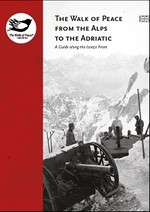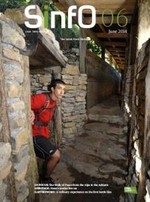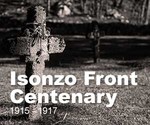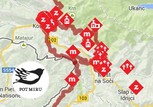47th Infantry Regiment
The 47th Infantry Regiment was established in 1682. After arriving in Maribor in 1817, it became the local Štajerska (Styria) regiment. The ethnic structure of its men, like all other regiments of the time, reflected the ethnic mixture of its region of mobilization. For the 47th Infantry Regiment, this was the Maribor, Radgona, Lipnica/Leibnitz and until the 1880s also the Celje regions. The history of the regiment is connected to various places in Italy, where it was stationed together with its headquarters. The regiment took part in Italian wars: Custozza 1848, Novara 1849, Solferino, 1859. In 1866, it fought in the Prussian War: The Battle of Hradce Kralove and in 1878 together with the other Austro-Hungarian regiments, it helped capture Bosnia and Herzegovina.
From 1895 onwards, its headquarters were in Gorica (Gorizia). The regimental battalions were also located in Kojsko and Maribor. Between the 10th and 12th August, 1914, the regiment was sent to the battlefield in Galicia. It was first involved in fighting at the end of August in Zloczow and Turkocin. It later fought in Grodek, Przemyslany, Chorow, Wolczi Dolni and Eastern Beskidy. It spent 1915 fighting in trenches near Konieczna and near Esztenbek. The heavy fighting caused severe casualties, swollen by exhaustion and diseases. The most prominent of the diseases was cholera rampant on the Galician fields. After the Battles of Prut and Dniester, the regiment left for the Italian Front. After May, 1915, its 10th battalion defended positions on Sabotin and, soon after, on the Doberdob plateau. In March, 1916, it left for Tyrol, where it fought in the battles on the Lavarone plateau and near Asiago. After returning to the Soča (Isonzo) Front in August 1916, it experienced the trenches on Škabriel, Hudi Log and Grmada. The regiment again distinguished itself during the 11th Isonzo Offensive and was returned from the reserves before the breakthrough of the Kobarid (Caporetto) Front in October, 1917. After the Italians retreated, it crossed the battlefront without a fight and reached the River Tilment. At the end of October and November, it fought near the River Tilment and in January 1918, on Monte Asolone. The regimen spent 1918 on the Italian battlefields. In July, they fought again on Monte Asolone and their last combat was in October 1918, on Monte Petrica. Ethnically, the regiment consisted of more than 70 % of Germans, around 20 % of Slovenians, 5 % were Czech and a small number were Bosnian and Italian.
Marko Štepec
National Museum of Contemporary History











